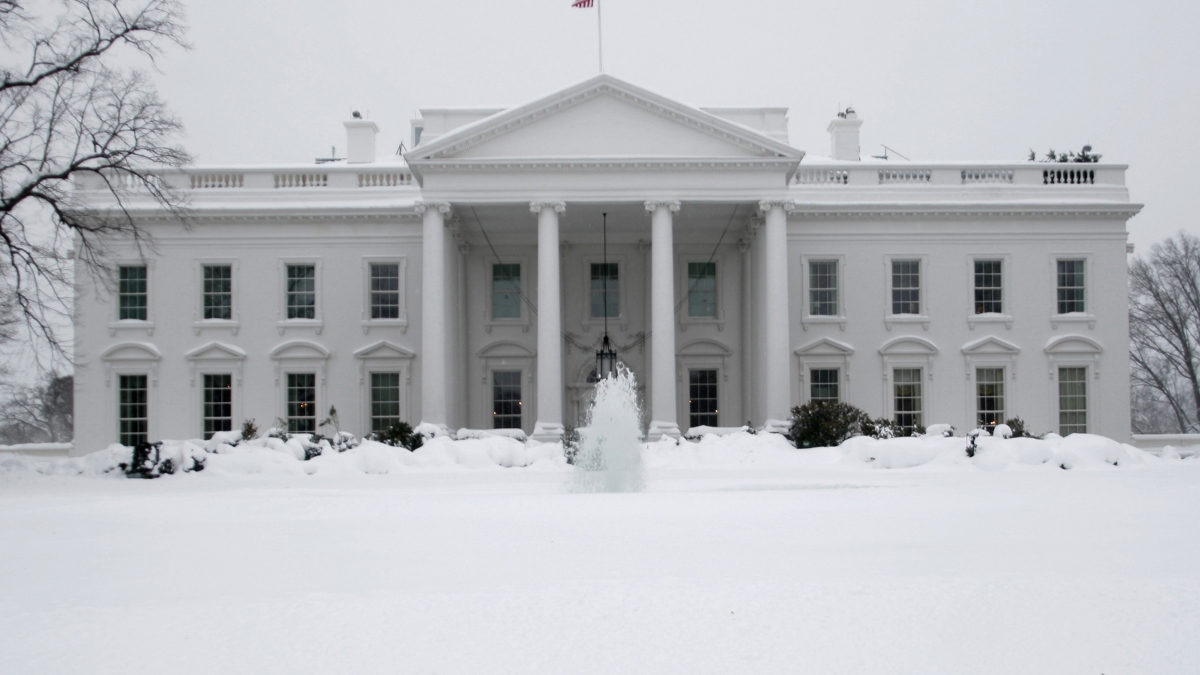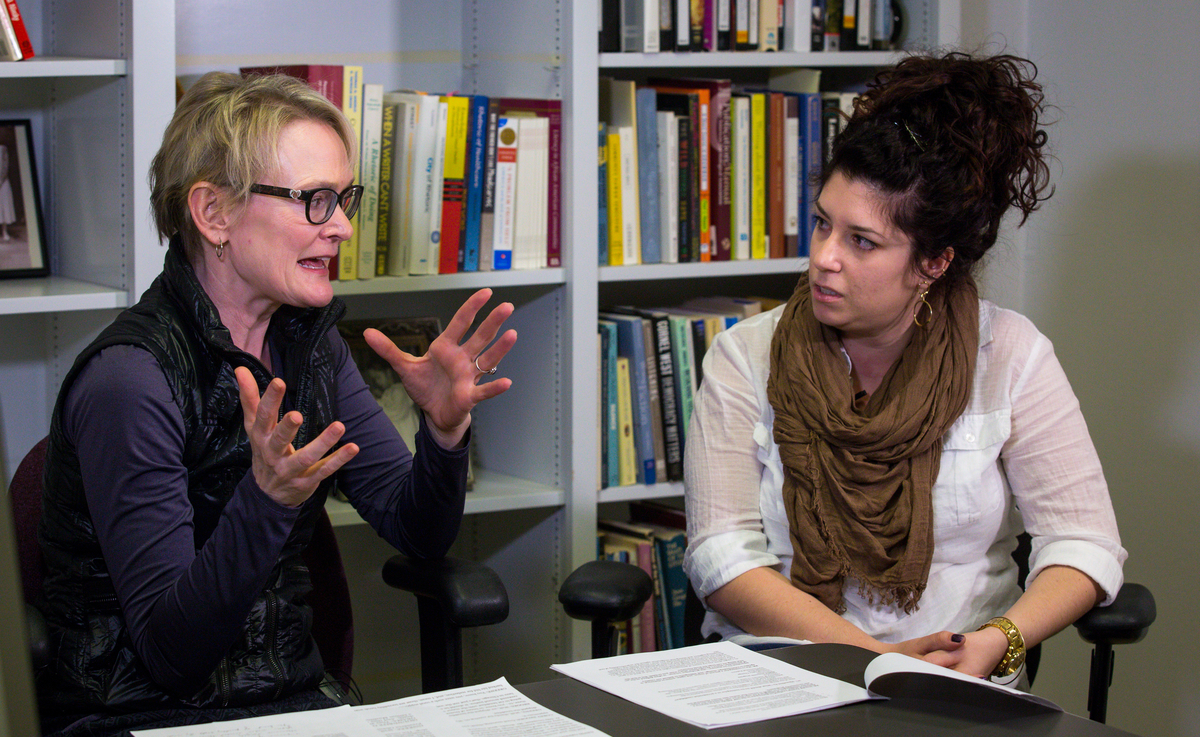In the age of the 24-hour news cycle, where quick soundbytes and images out of context dominate the online realm, rhetoric rules.
In an election year, this is especially so. And with the Iowa Caucus starting Monday, the political rhetoric around the 2016 presidential election is only going to grow.
To the general popular, “rhetoric” is seen as a negative entity; the kind of sentiment built on ignorance or passionate reaction — again, the kind of thing that flourishes in a viral news world. But Elenore Long, a professor in Arizona State University’s Department of English in the College of Liberal Arts and Sciences, says that "rhetoric" is more than just the slimy use of language and manipulation. Rhetoric at its best, she says, is the means by which people discover solutions to pressing, shared matters of concern.
Long, along with English doctoral student Kayla A. Bruce, spoke to ASU Now on the eve of the caucus about the true dynamics of rhetoric, how it can foster understanding and what people should look for in a political candidate.
Associate professor Elenore Long discusses the use of rhetoric in accountable and dangerous forms, in her office with doctoral candidate Kayla Bruce, on Wednesday, Jan. 27, 2016. Photo by Charlie Leight/ASU Now
Question: How would you help voters identify what’s productive rhetoric and what’s manipulation?
Long: Productive rhetoric has some features, especially in relation to political discourse, as an approach to language. It doesn’t try to clobber difference or squash someone who might have another opinion or ideas. It’s also about a way of thinking about language in terms of the debate open for public discussion as much as the claims that the talk is driving. Another feature of productive political rhetoric is that it’s attentive to peoples’ experiences with policies and practices that come from public policy.
Rhetoric that’s manipulative tries to hide the means by which it attempts to persuade. It knows that that might feel like spin or manipulation if the audience understands how that argument was produced. Rhetoric that’s not manipulative isn’t afraid to open up the ways in which the argument is working.
Bruce: Most effective rhetoric speaks through action or change whereas manipulative rhetoric sort of speaks over groups and experiences and tries to wash everything into a clean, compact element, as opposed to speaking to the variety of the situation.
Q: When during the election process have you observed moments when the terms of the debate itself has opened up in some interesting and useful ways?
Long: During the election campaign public discourse itself has opened up in interesting ways — tragically, after the San Bernardino massacre. The shootings fostered some political candidates (to present a) discourse about Muslims that was overarching and hateful. Other politicians stepped in to interrogate the accuracy of those kinds of claims to think about the consequences of overstating identity politics and misrepresenting billions of people around the world and many patriotic Muslims in the country itself. Attention to the toxicity of the misuse of language, I think, when politicians have done that work, helped to enrich the dialogue.
One of my favorite instances during this political campaign was when two political reporters from MSNBC traded places. The Democratic reporter covered the Republican party and vice versa, and compared on what they saw and what surprised them. Interestingly, that comparison allowed them to try and find the logic of the two parties. It also opened up talk about what the parties care about and what drives voters.
Bruce: Rhetoric is best and works best as dialogue. The recent news of Donald Trump’s refusal to participate in the Republic GOP debate hosted by FOX News underscores the idea that, how can you be effective if you’re not participating in dialogue? I think that for me demonstrates what rhetoric does.
Q: What are some of the attributes we should we be looking for in a presidential candidate?
Long: I believe one of the most important attributes we should be looking at in a candidate is a stance toward problem solving. Someone who thinks about listening to other people as part of an imaginative team who is attentive to the ways that are important and particular in this moment in time. A recent NPR story covered why people are leery of voting — stalled economic progress, terrorism, demographic changes, immigration. Those are matters that goodwill alone isn’t going to solve, but we need rhetoric to employ new and imaginative ways to create different responses to perplexing issues.
Bruce: Attending to dialogues with different groups that might be overlooked or marginalized, I think, starts to get at the issues that Elenore has outlined.
Q: It appears people no longer debate or enter into a discourse; rather, they shout each other down and continue to make their point.
Long: I believe there is truth in that statement. A lot of the ways that the media and politicians structure press coverage, it can look more like a circus than a debate. What’s really exciting right now about the coverage is that there are various and creative ways that people are joining in the messy work of rhetoric. For example, in Chicago there’s a group of ministers who have gotten together to listen to a group of young men’s experiences about police officers; these ministers have started to theorize what’s been happening in these moments of altercation. Before that, the work would go under the radar. I think smart politicians are able to circle back around to those lively and untidy ways people are listening and learning from each other. Experimentation with town hall meetings and other forums are other ways we are benefitting from creative people who are trying to make word and policy work in their lives.
Bruce: That builds on the concept of rhetorical listening as opposed to persuasion, and is a very useful way of engaging.
More Law, journalism and politics
Can elections results be counted quickly yet reliably?
Election results that are released as quickly as the public demands but are reliable enough to earn wide acceptance may not always be possible.At least that's what a bipartisan panel of elections…
Spring break trip to Hawaiʻi provides insight into Indigenous law
A group of Arizona State University law students spent a week in Hawaiʻi for spring break. And while they did take in some of the sites, sounds and tastes of the tropical destination, the trip…

LA journalists and officials gather to connect and salute fire coverage
Recognition of Los Angeles-area media coverage of the region’s January wildfires was the primary message as hundreds gathered at ASU California Center Broadway for an annual convening of journalists…



